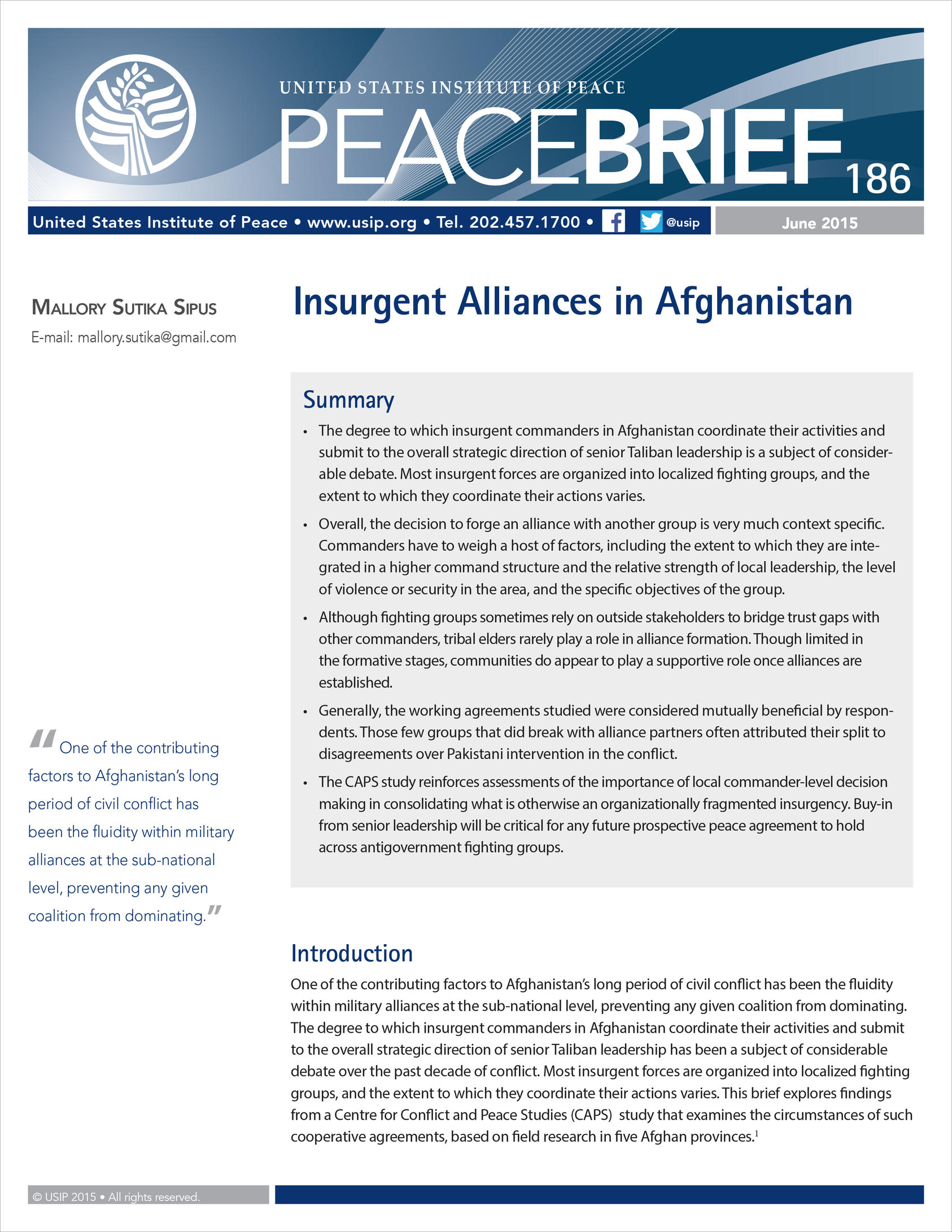One of the contributing factors to Afghanistan’s civil conflict has been the fluidity within military alliances at the sub-national level. This brief examines the circumstances of military alliances between insurgent commanders—what factors play into an alliance and how they are maintained, with assessments resulting from research from the Centre for Conflict and Peace Studies and supported by USIP.
Summary
- The degree to which insurgent commanders in Afghanistan coordinate their activities and submit to the overall strategic direction of senior Taliban leadership is a subject of considerable debate. Most insurgent forces are organized into localized fighting groups, and the extent to which they coordinate their actions varies.
- Overall, the decision to forge an alliance with another group is very much context specific. Commanders have to weigh a host of factors, including the extent to which they are integrated in a higher command structure and the relative strength of local leadership, the level of violence or security in the area, and the specific objectives of the group.
- Although fighting groups sometimes rely on outside stakeholders to bridge trust gaps with other commanders, tribal elders rarely play a role in alliance formation. Though limited in the formative stages, communities do appear to play a supportive role once alliances are established.
- Generally, the working agreements studied were considered mutually beneficial by respondents. Those few groups that did break with alliance partners often attributed their split to disagreements over Pakistani intervention in the conflict.
- The CAPS study reinforces assessments of the importance of local commander-level decision making in consolidating what is otherwise an organizationally fragmented insurgency. Buy-in from senior leadership will be critical for any future prospective peace agreement to hold across antigovernment fighting groups.
About this Brief
This brief, prepared by Mallory Sutika Sipus, Senior Research Analyst at Centre for Conflict and Peace Studies, provides a synopsis of key takeaways from a larger USIP-supported CAPS study, Understanding Alliances in Afghanistan. Additional research support for the larger study came from CAPS Research Analysts Hekmatullah Azamy, Sayed Maqsodi, Ehsanullah Kamal, and Dr. Monsoor Majaab. Data Visualization Specialist Mitchell Sipus also lent his social networking expertise. Finally, Deputy Head of Research Halim Kousary and former CAPS Director Mr. Hekmat Karzai contributed key substantive and logistical insight.
